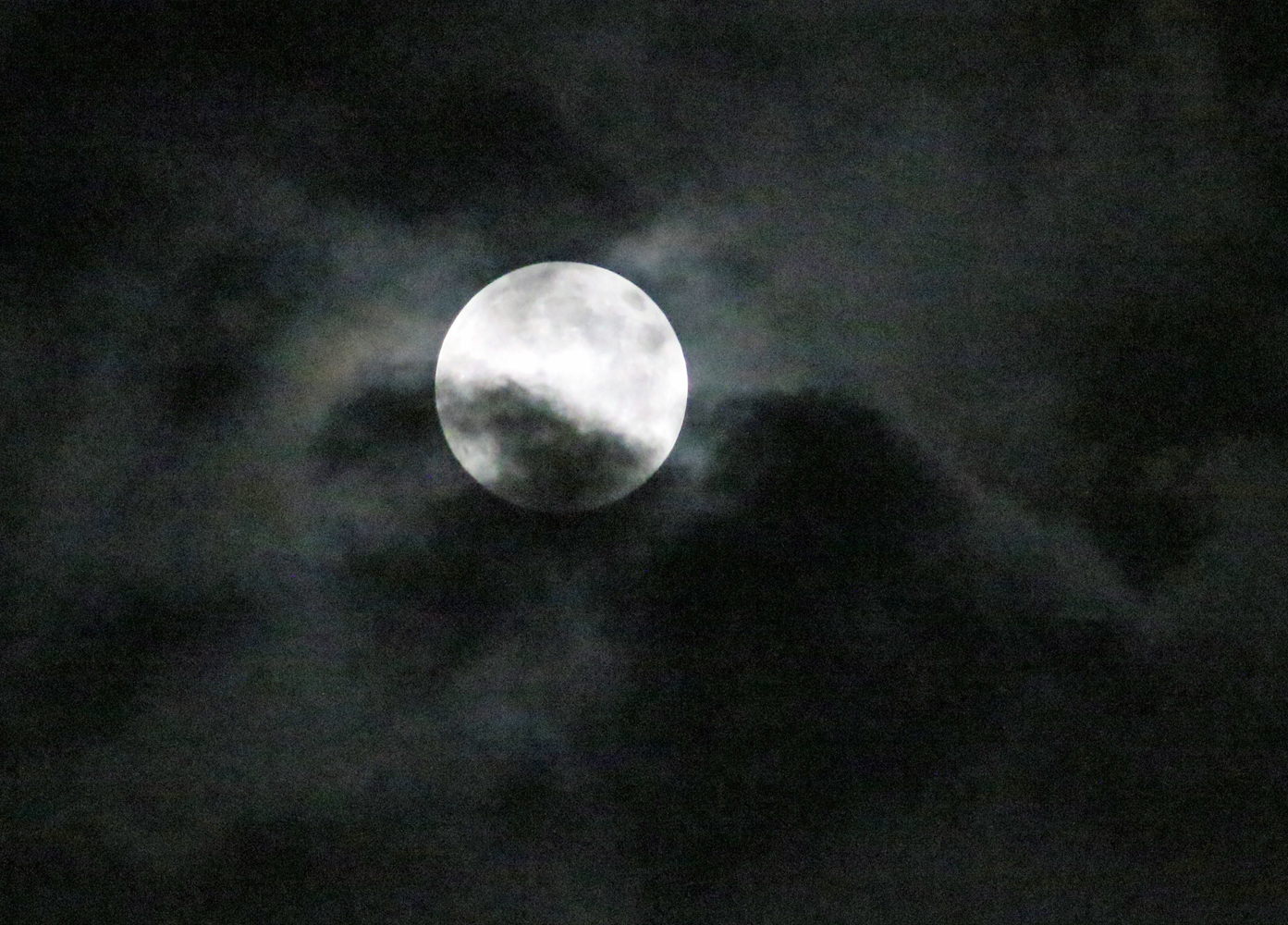|
Moderated by NW Okie! |
Volume 17 , Issue 262015Weekly eZine: (366 subscribers)Subscribe | Unsubscribe Using Desktop... |
Walking With Sadie

Woof! Woof! Did you see the "Blue Moon" a few days ago, 31 July 2015? NW Okie snapped this view of the "Blue Moon" while we were down in Houston this last weekend at 11 o'clock PM. But it wasn't at midnight, and it wasn't blue.
What exactly is a "Blue Moon," anyway?
According to some, there are two definitions of a Blue Moon in astronomy. Both are a type of full moon. If the moon actually looks blue, it is caused by a rare type of dust in the atmosphere.
We have all heard the term "Once in a blue moon," haven't we? The term means that something is very rare, but just how rare, depends on your definition.
In astronomy, a Blue Moon is a full moon, which doesn't quite fit in with the months in our calendar. There are two completely different ways of calculating which full moon is a blue moon:
1.) The Blue Moon is the third full moon in an astronomical season with 4 full moons, versus the normal 3.
2.) The Blue Moon is the second full moon in a month with two full moons.
Why are there two definitions? The second definition came about after an article by hobby astronomer James Hugh Pruett (1886-1955) was published in the American magazine "Sky and Telescope" in 1946. He made a miscalculation, and claimed that any second full moon in a calendar month is called a blue moon. His mistake was easily refuted, and a correction was printed soon after. But his mistake spread worldwide, possibly because his definition was much simpler than the original one.
The correct, original definition was that a Blue Moon was the third full moon in an astronomical season with four full moons. A normal year had four astronomical seasons: Spring, Summer, Fall and Winter, with three months and normally three full moons each.
When one of the astronomical seasons has four full moons, instead of the normal three, the third full moon is called a Blue Moon.
Astronomical Blue Moons happen either once every two to three years or so, depending on which of the two definitions you use.
A moon that actually looks blue is a very rare sight. The moon, full or any other phase, can appear blue when the atmosphere is filled with dust or smoke particles of a certain size - slightly wider than 0.7 micron. The articles scatter the red light making the Moon appear blue in color, and this can happen for instance after a dust storm, forest fire or a volcanic eruption.
Good Night! Good Luck! Woof! Woof!
| View or Add Comments (0 Comments)
| Receive
updates ( subscribers) |
Unsubscribe
| © . Linda Mcgill Wagner - began © 1999 Contact Me | |
